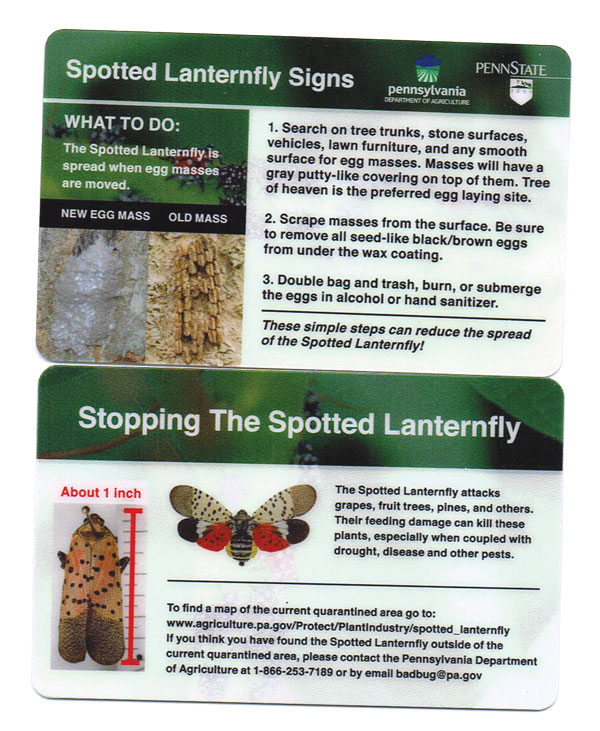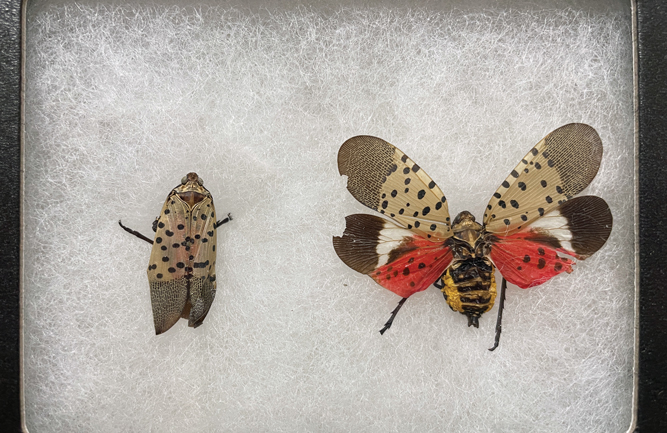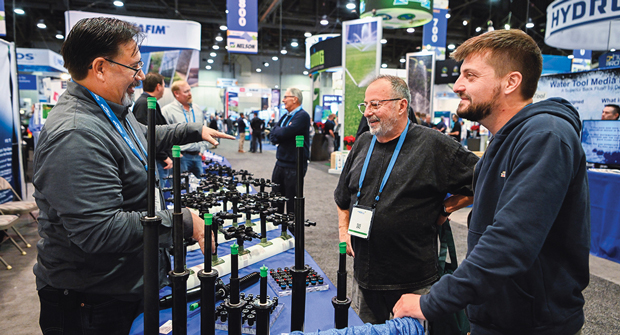Turf Pest of the Month: How to manage spotted lanternfly

Alan Fitzgerald
Alan FitzGerald, CGCS, MG, superintendent at LedgeRock Golf Club in Mohnton, Pa., vividly remembers his early experiences with spotted lanternfly (SLF). LedgeRock is about 10 or 15 miles from the first known location of SLF in the U.S. in 2014. Since then, researchers have found populations in New Jersey, New York, Ohio, Connecticut, Maryland, Delaware, Virginia and West Virginia.
It took a couple of years for the pest populations to grow in Pennsylvania, but in 2018 and 2019, FitzGerald said SLF’s presence on the golf course was intense.
“We had a maple tree that the whole bark was just moving because they were just moving up and down the bark,” he says.
And, as expected, with the populations that LedgeRock experienced, FitzGerald said golfers and members worried these bugs — about an inch in length — would cause massive damage to the course.
FitzGerald, Golfdom’s 2019 Herb Graffis Businessperson of the Year award winner, and the LedgeRock team never applied chemical controls. They opted to wait it out each year. FitzGerald says populations were low last year. When pest populations were high, the team at LedgeRock deployed lanternfly ID cards from the Pennsylvania Department of Agriculture to help golfers understand the threat to the course. He said he put the cards in the clubhouse for members. He also communicated with members through course updates on how LedgeRock worked with Penn State and the Department of Agriculture to control SLF’s spread.

Photo: Alan Fitzgerald
What to Know
Brian Walsh, Penn State Extension horticulture educator for Berks County, suggests superintendents approach spotted lanternfly management in two different ways, depending on whether their course is in an area with an established population or located in a satellite population.
“If you are in an area where they haven’t been reported yet, record it and make sure the local government agencies have become aware of them,” he says. “There’s some hope that if caught early enough, the government agencies responsible will be able to treat and knock down a satellite population.”
Walsh suggests superintendents view Penn State’s spotted lanternfly management guide to learn more about effective management for spotted lanternfly. While the removal and killing of egg masses can help slow populations, Walsh says the team at Penn State learned spotted lanternflies lay the majority of egg masses in the top two-thirds of a tree, which makes both scouting and destruction of egg masses challenging.
Walsh says the feeding habits of SLF change depending on its life cycle. While the tree of heaven is a plant the pest favors, the first and second instars feed on lush new growth, including perennial plants. Roses, too, are a good indicator plant on a property for early instar nymphs.

Chris Williamson
How to Manage SLF
When it comes to chemical controls, Chris Williamson, Ph.D., Midwest research scientist for PBI-Gordon, says, “there are many things to consider before deciding to use an insecticide to kill SLF on trees or shrubs.”
While spotted lanternflies are easy to control with insecticides, including PBI-Gordon’s Zylam (dinotefuran), he encourages superintendents to consider cultural controls first. These include promoting plant health, removing host plants, eliminating egg masses when necessary, trapping to monitor populations and destroying nymphs and adults, and using soaps and oils.
When lanternflies feed, the adults secrete a sticky substance called honeydew. Honeydew is messy and also attracts yellow jackets and other stinging insects. High insect populations and honeydew can be a big motivator for courses to opt for chemical controls, especially if the course hosts major events or weddings, Walsh says. But, he encourages superintendents to be mindful of when to make pesticide applications.
“We are urging people to make good choices with their pesticide use and make that determination,” he says. “Is it really necessary to use it? Evaluate the benefit to the customer or the property before automatically going for the insecticides.”












